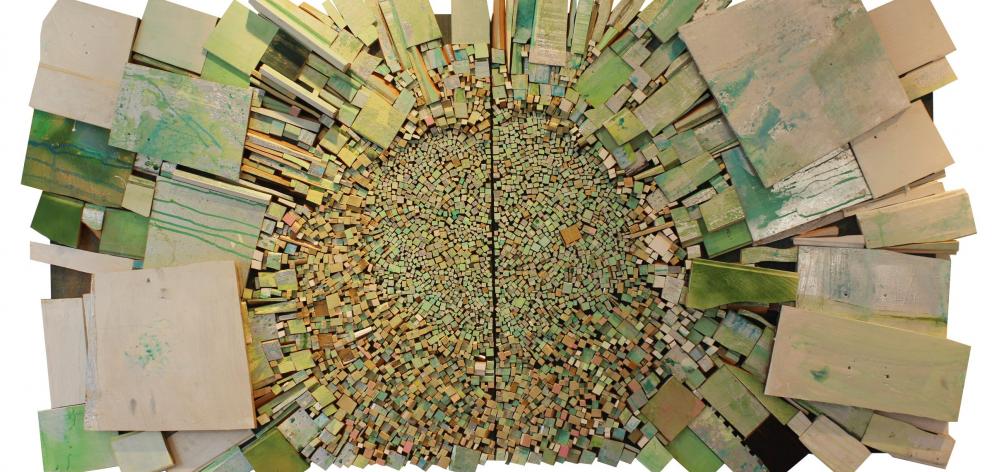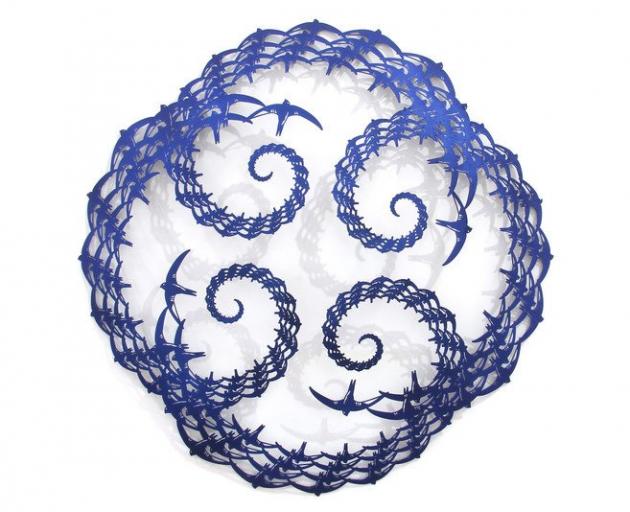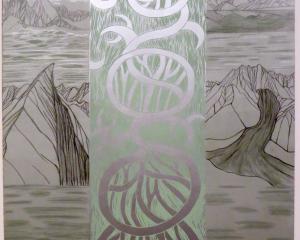In this week's Art Seen, Laura Elliott looks at exhibitions from Nigel Wilson, Louise McRae, and Milford Galleries.
 Ferris Road Project, by Nigel Wilson
''Ferris Road Project, Nigel Wilson (Hullabaloo Art Space, Cromwell)
Ferris Road Project, by Nigel Wilson
''Ferris Road Project, Nigel Wilson (Hullabaloo Art Space, Cromwell)

The ''Ferris Road Project'' is a sun-dappled path into new artistic territory for Nigel Wilson, as the painter moves from his usual oil canvases into acrylics on paper, to communicate the tranquillity of a personal sanctuary: his home environment in Alexandra.
Wilson's work is very painterly: individual movements of his hand and brush are visible in the dabs and drops of colour on the picture surface, and it conveys the sense of an artist working rapidly to record the impressions of a landscape constantly changing in shifting light and weather. However, despite the suggested energy and vigour behind the art-making, the completed image radiates a feeling of peace and safety that is passed along to the viewer.
In the handwritten note that accompanies the exhibition, Wilson concludes with a recommendation to ''Enjoy the walk'', and that is the experience of moving through each work in the collection. It's like turning the corner on every bend of a quiet walk through the trees and seeing a new perspective of the landscape, with the clouds drifting with you and the sun casting different shadows across the grass. In a couple of works, thin streaks of white and black paint come to the forefront and act on the eye rather like having to push away to foliage to see what's beyond, as if you're actually present in the scene.
 Each Dawns News, by Louise McRae
''No Ordinary Sun'', Louise McRae (Art Bay Gallery, Queenstown)
Each Dawns News, by Louise McRae
''No Ordinary Sun'', Louise McRae (Art Bay Gallery, Queenstown)

Louise McRae's work is both painting and sculpture, breaking down existing shapes and entities, and reconstructing them into something more remarkable. McRae paints landscapes on scrap wood, capturing rough scenes of the earth, sky and sea, before she literally shatters that imagery, splitting the wood into colourful kindling. Those fragments are pieced together into sculptural form, hundreds of individual blocks coming together into an incredibly cohesive, fascinating picture plane. The clusters of the smallest pieces of wood, arranged with the ends facing outward, might be the deliberate brush dots of a Pointillist painting; while the deliberate fragmentation of the image is reminiscent of a Picasso. It's as if a Cubist painting has pushed outward from the canvas and become three-dimensional and tactile.
The Winds Talk and Each Dawns News have an effect that's almost like aerial photography, like looking down on the rooftops of an incredibly populated cityscape, an interesting juxtaposition with the base material of the works, recycled wood from a rural setting. ''No Ordinary Moon'', as its title would suggest, could be an image from space, a starburst of colour seeming to burn against a dark atmospheric background; yet it too is intensely earthy in its physical composition. Intriguingly, no matter how close you stand to McRae's work, there's a sense that you're viewing the subject from a great distance.
 Murmuration 25, by Neil Dawson
''The Earl Street Journal'', various artists (Milford Galleries, Queenstown)
Murmuration 25, by Neil Dawson
''The Earl Street Journal'', various artists (Milford Galleries, Queenstown)

Milford Galleries' annual ''Earl Street Journal'' returns with a selection of diverse works by some of New Zealand's most internationally acclaimed artists. There is a good balance between paintings and ceramics, glass art and sculptures, with many of the gems of the collection falling into the latter categories.
Layla Walters' floral cast-glass vessels are beautiful, monochromatic yet manage to capture an incredible depth and variation of tone within a single colour palette. Delicately wrought, the Camellia Vase, in particular, has a sense of timelessness in its design, but a modernity to the finish. The cool simplicity of John Parker's ceramic work belies the technical skill inherent in the flawless finish, while the decorative patterns on Mark Mitchell's Scratch and Vein play havoc with the eye, allowing no fixed point to focus on and creating a sense of perpetual, uneven movement.
Neil Dawson's steel sculptures are always a favourite, a feat of deceptively delicate metalwork and precise mathematical patterns. Murmuration 25 springs from the phenomenon when starlings swoop together and form intricate shapes in the dusk sky. Dawson joins dozens of his metal birds in graduating sizes and makes ingenious use of shadow, so the swirling curves formed by their touching wings appear to extend far back beyond the flat surface of the wall upon which the work is mounted.
-By Laura Elliott







![Untitled (c. mid 1990s, [pink 3]), by Martin Thompson, 415mm×590mm. Photo: courtesy of Brett...](https://www.odt.co.nz/sites/default/files/styles/odt_landscape_small_related_stories/public/story/2024/02/untitled_pink_3.jpg?itok=Q0aQrc9o)




